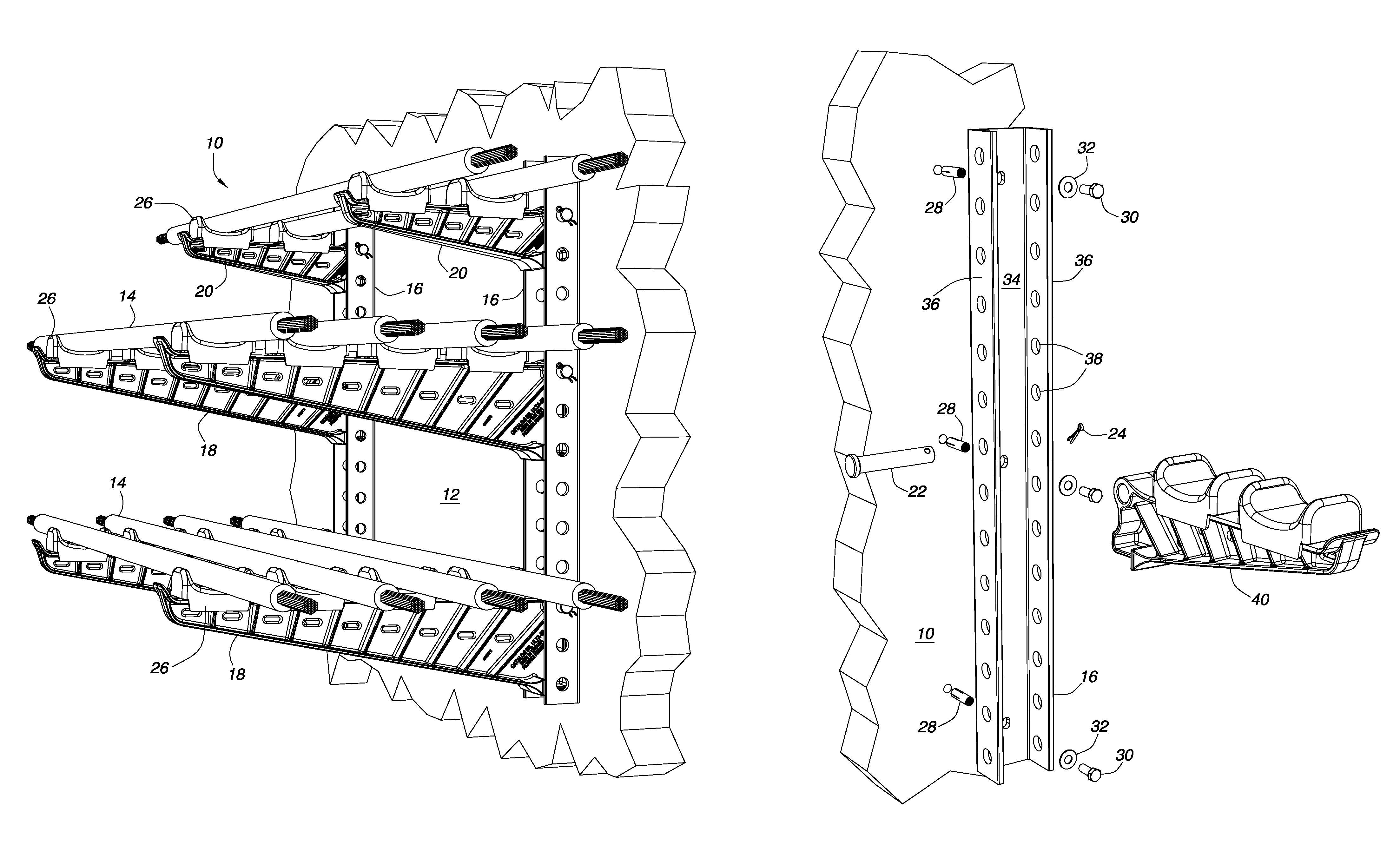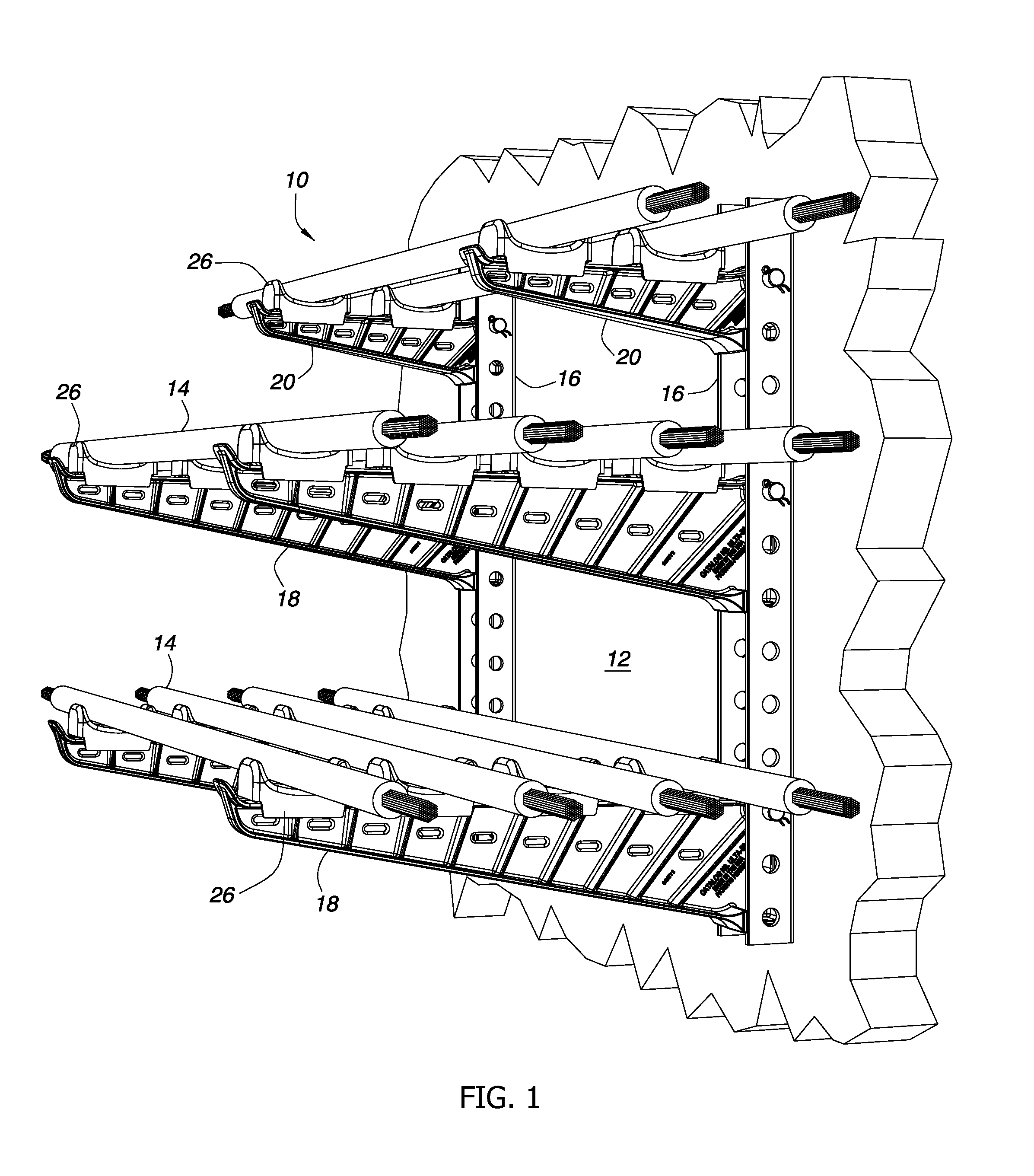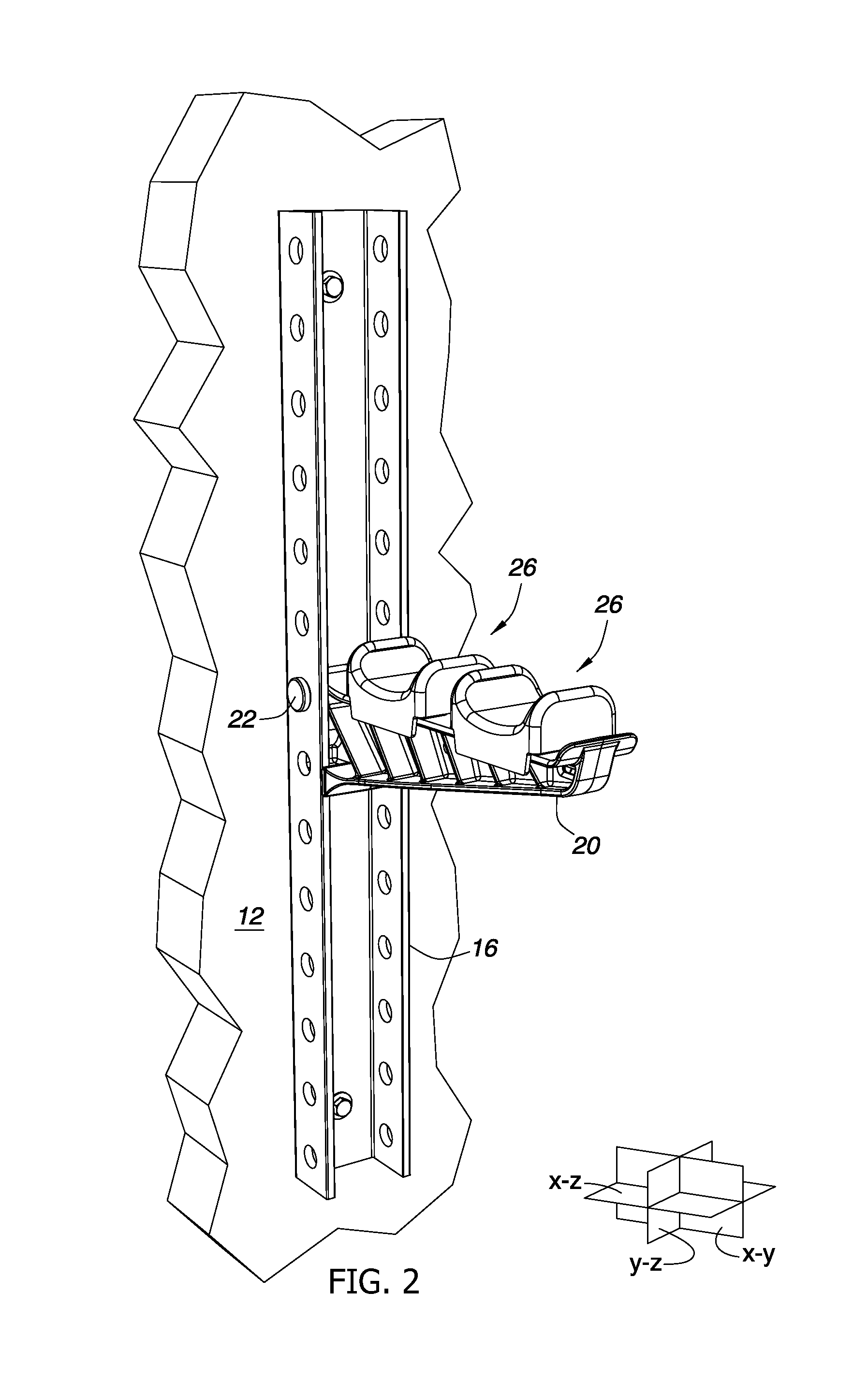ULT cable support system
a technology of support system and cable, which is applied in the direction of machine support, machine support, shock absorber, etc., can solve the problems of affecting the service life of overhead cables, and prone to destructive forces of overhead cables
- Summary
- Abstract
- Description
- Claims
- Application Information
AI Technical Summary
Benefits of technology
Problems solved by technology
Method used
Image
Examples
Embodiment Construction
[0039]Embodiments of the cable arms and saddles described herein are preferably molded from plastic materials. In this context, “plastic” materials include any resinous, thermoset, or thermoplastic materials, including materials that are reinforced or otherwise altered, and which are formed by molding. Thus, in one embodiment, nylon with short or long glass fibers is used to make strong, stiff, and environmentally-resistant rack arms. In the present context, short glass fibers intends glass fibers from about ⅛″ (about 3 mm) long to about ¼″ (about 6 mm) long. Long glass fibers, from about 3 / 16″ (about 5 mm) to about ⅜″ (about 10 mm) or longer, may be used instead for greater strength and stiffness. Glass fibers with diameters from about 0.009 mm (0.00035 in) to about 0.011 mm (0.00043 in) may be used for reinforcement. Fibers with other diameters may also be used.
[0040]In one embodiment, cable rack arms as described below may be compression-molded with 50% long glass fibers. Other p...
PUM
 Login to View More
Login to View More Abstract
Description
Claims
Application Information
 Login to View More
Login to View More - R&D
- Intellectual Property
- Life Sciences
- Materials
- Tech Scout
- Unparalleled Data Quality
- Higher Quality Content
- 60% Fewer Hallucinations
Browse by: Latest US Patents, China's latest patents, Technical Efficacy Thesaurus, Application Domain, Technology Topic, Popular Technical Reports.
© 2025 PatSnap. All rights reserved.Legal|Privacy policy|Modern Slavery Act Transparency Statement|Sitemap|About US| Contact US: help@patsnap.com



